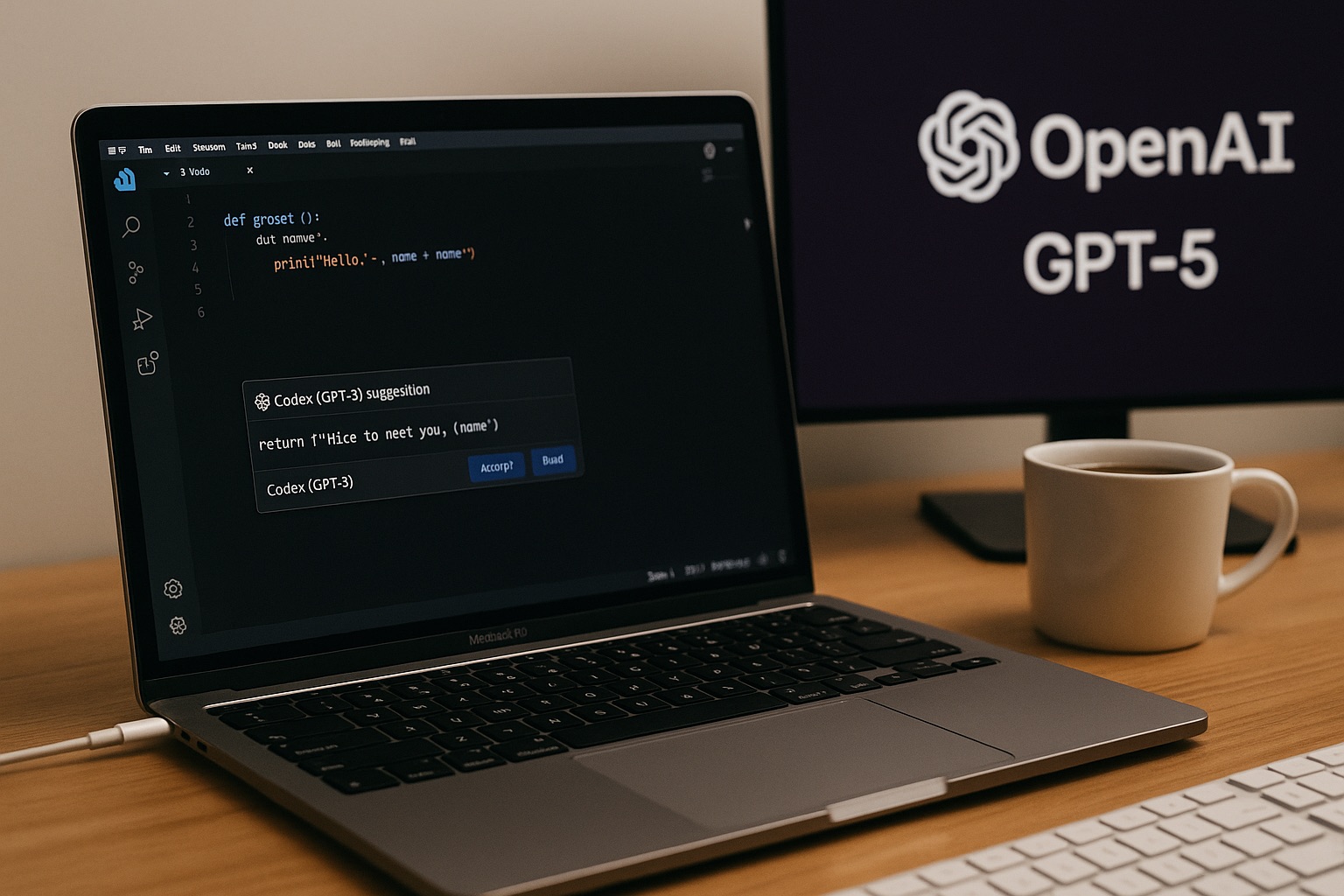OpenAI just dropped something that could reshape how we think about AI coding assistants. GPT-5-Codex doesn’t just write code—it thinks about problems dynamically, potentially spending anywhere from a few seconds to seven hours working through complex coding challenges. Think of it like having a coding partner who knows when to move fast on simple tasks but isn’t afraid to dig deep when the problem demands it.
This isn’t just another incremental update in the crowded AI coding space. While competitors like Cursor hit $500 million in annual recurring revenue and sparked acquisition battles between tech giants, OpenAI took a different approach. Instead of building flashier interfaces or faster autocomplete, they focused on something more fundamental: teaching their AI when and how long to think about coding problems.
The implications extend far beyond benchmark improvements. This dynamic thinking approach could fundamentally change how developers interact with AI coding tools, moving from quick suggestions to genuine problem-solving partnerships.
Understanding Dynamic Thinking: How GPT-5-Codex Decides When to Work Harder
Traditional AI coding tools work like sprint runners—they get your prompt, process it quickly, and deliver results in a predictable timeframe. GPT-5-Codex operates more like a marathon runner who can also sprint, adjusting its pace based on the complexity it discovers along the way.
Here’s where it gets interesting. Most AI models use what’s called a “router” system that decides upfront how much computational power to dedicate to a problem. It’s like deciding at the beginning of a puzzle whether you’ll spend 10 minutes or 2 hours on it, regardless of what you discover as you work.
GPT-5-Codex eliminates that limitation. According to OpenAI’s Codex product lead Alexander Embiricos, the model can decide five minutes into a problem that it needs another hour to solve it properly. In some cases, he’s observed the model working for upwards of seven hours on particularly complex challenges.
Practical implications for developers:
- Simple bug fixes still happen in seconds
- Complex architectural problems get the deep thinking they deserve
- No need to manually escalate difficult problems to different tools
- More accurate solutions for challenging coding tasks
GPT-5-Codex vs The Competition: Where It Stands in the Crowded AI Coding Market
The competitive landscape has exploded recently. Cursor’s meteoric rise to $500 million ARR proved developers will pay premium prices for genuinely useful AI coding tools. Meanwhile, acquisition battles around Windsurf saw teams splitting between Google and Cognition, highlighting how valuable this market has become.
Key players and their approaches:
- Claude Code: Command-line focused, emphasizes agentic coding workflows
- Cursor: Popular code editor with seamless AI integration, strong user growth
- GitHub Copilot: Microsoft-backed, deeply integrated with development workflows
- GPT-5-Codex: Dynamic thinking approach, available across multiple platforms
Where GPT-5-Codex differentiates itself:
- Available through terminal, IDE, GitHub, and ChatGPT interfaces
- Dynamic problem-solving time allocation
- Superior performance on SWE-bench Verified benchmarks
- Enhanced code review capabilities with fewer incorrect comments
The platform-agnostic approach means developers can access GPT-5-Codex through their preferred workflow, whether that’s command-line work, IDE integration, or web-based interaction through ChatGPT.
Benchmark Performance: SWE-bench Verified and Code Refactoring Results
GPT-5-Codex outperforms its predecessor GPT-5 on SWE-bench Verified, a benchmark specifically designed to measure agentic coding abilities. This isn’t just about writing individual functions—it’s about understanding large codebases, making systematic changes, and handling the kind of complex, multi-step coding tasks that mirror real-world development work.
Code refactoring performance represents another significant improvement. Refactoring requires understanding existing code structure, identifying improvement opportunities, and implementing changes without breaking functionality. It’s one of the most intellectually demanding aspects of software development.
The software engineer validation adds credibility to these benchmark improvements. OpenAI had experienced developers evaluate GPT-5-Codex’s code review comments, and engineers found the model submitted fewer incorrect comments while adding more “high-impact” feedback.
What this means for daily development work:
- More reliable code suggestions and corrections
- Better understanding of large, established repositories
- Improved code quality through enhanced review capabilities
- Reduced time spent debugging AI-generated suggestions
Availability and Access: Who Can Use GPT-5-Codex Right Now
Current availability spans ChatGPT Plus, Pro, Business, Edu, and Enterprise users. This broad access strategy differs from some competitors who focus primarily on individual developers or enterprise customers exclusively.
Access methods include:
- Terminal-based interaction for command-line developers
- IDE integration for seamless coding workflow
- GitHub integration for repository-based development
- ChatGPT interface for conversational coding assistance
API availability remains in the future, with OpenAI planning to make GPT-5-Codex accessible to API customers eventually. This could open possibilities for third-party integrations and custom applications built around the dynamic thinking capabilities.
The Bigger Picture: What Dynamic AI Thinking Means for Software Development
This release signals a shift in AI coding tool philosophy. Rather than optimizing purely for speed or suggestion quantity, GPT-5-Codex prioritizes solution quality through adaptive problem-solving approaches.
Long-term implications for developers:
- AI tools that match their thinking patterns more naturally
- Reduced context switching between simple and complex problem-solving tools
- More reliable AI assistance for challenging architectural decisions
- Potential for AI pair programming that feels genuinely collaborative
The dynamic thinking approach could influence how other AI coding tools evolve. If developers respond positively to variable processing times in exchange for better solutions, we might see similar adaptive approaches across the industry.
Market positioning becomes crucial as the AI coding space matures. While Cursor focuses on editor experience and Claude Code emphasizes terminal workflows, GPT-5-Codex’s platform-agnostic, thinking-time approach carves out a unique position that could appeal to developers across different working styles and preferences.




Post a comment